Ocean Freight
Efficient Ocean Freight Shipping Services from China
If you are considering shipping cargo via sea shipping from China to your country, this page will provide insights into the rates, quotes, and charges associated with ocean freight shipping. Moreover, we will share valuable tips and the best rates for your business.
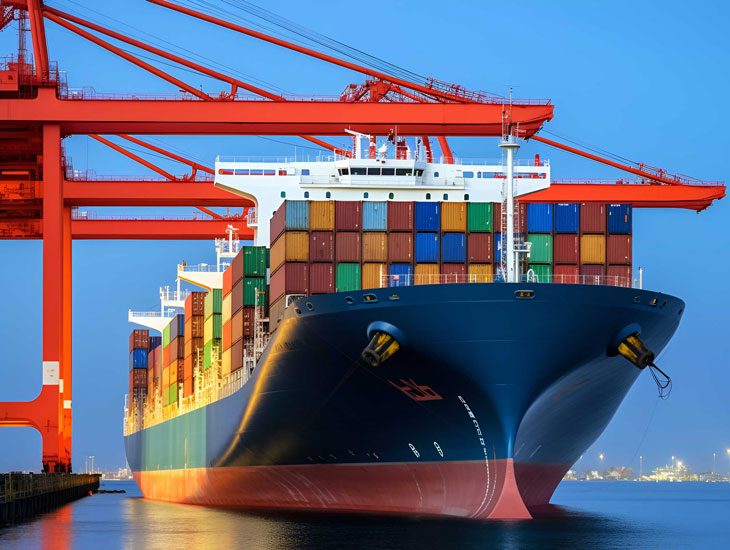
What is Ocean Freight?
Ocean freight, also known as sea freight, involves the transportation of cargo by ship across the ocean. It is a cost-effective option for shipping large volumes of goods over long distances. The rates for ocean freight shipping depend on factors such as the distance between the origin and destination, the size and weight of the shipment, and the type of vessel utilized for transportation. Ocean freight is the predominant mode of transportation utilized by importers and exporters, accounting for approximately 90% of goods shipped globally.
Why choose sea shipping service?
Sea shipping is a popular choice for shipping goods for its affordability, high capacity, and fewer restrictions on carrying capacity.
There are advantages to sea freight service:
- Cost-effectiveness: sea shipping from China to other countries is the most economical method for transporting large shipments over long distances.
- Reliability: All goods will be shipped in containers.
- Global Availability: Ports are situated worldwide, making finding a port near your origin or destination convenient.

Ocean Freight Services
There are 2 options for sea shipping services in international logistics, including full container load (FCL), and less than container load (LCL)
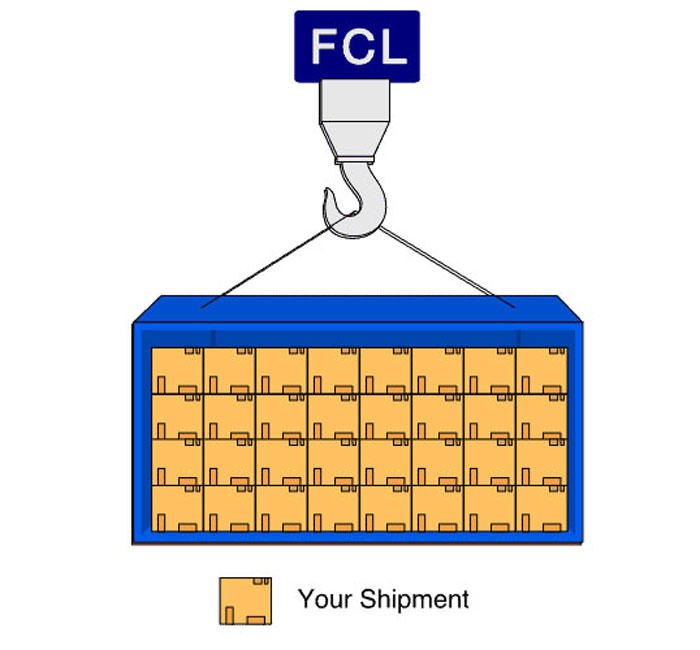
Full Container Load (FCL)
Full Container Load (FCL) refers to procuring one or more complete containers to be transported via a ship. The most common container type sizes for FCL shipments are 20FT, 40FT, and 40HQ.
- 20FT : 5.69m*2.13m*2.18m / 24-26 CBM
- 40FT : 11.38m*2.13m*2.18m/ 57-59 CBM
- 40HQ: 12.19m*2.44m*2.67m/ 66 CBM
FCL cargo is when a single shipper solely owns all the contents of the container.
Less than Container Load (LCL)
Less than Container Load ( LCL), is used when the volume of goods being shipped does not fill up a full container. In LCL shipments, multiple smaller shipments from different shippers are consolidated and loaded into a shared container.
When the ship arrives at the destination port, the container is unpacked and the individual shipments are delivered to their respective recipients at the destination port.
LCL sea shipping service allows multiple shippers to share the cost of shipping and makes it more cost-effective for smaller shipments that do not require a full container.
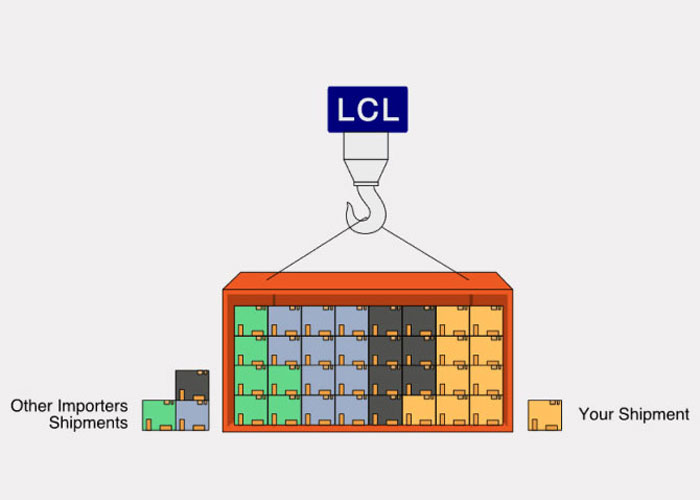
The Pros and Cons of sea shipping from China
Pros:
- Cost-effectiveness: Sea freight is generally more economical than other modes of transportation. It offers a cost-effective shipping solution for businesses without incurring significant expenses.
- Efficient for oversized items: sea shipping is particularly advantageous for transporting large and bulky items.
- Environmentally friendly: It produces lower carbon emissions per unit of transported goods than air or road transport.
Cons:
- Longer delivery times: One of the significant drawbacks of sea freight is its time-consuming nature. This can be a disadvantage for businesses with time-sensitive shipments.
- Cost for lower volumes: Sea freight often involves fixed expenses, making it less affordable for smaller quantities of goods.
Documents of Ocean Freight
When transporting your shipments via sea shipping from China, you should prepare shipping documents in advance. The key shipping documents for sea shipping shipments include:
01. Commercial Invoice
This document needs to contain a detailed description of the goods being shipped, including quantity, and value.
02. Packing List
The packing list contains specifying the quantity, weight, and dimensions of each item.
03. Export Customs Declaration
This document contains export of goods details include the shipper, consignee, goods description, value, and other customs-related information.
04. Bill of Lading
BL serves as a receipt of goods and a contract of carriage between the shipper and the carrier. It includes details about the shipment, such as the origin, destination, and consignee.
05. Production Certificate
Production Certificate (e.g., CE, ROHS, FDA, or FCC): Depending on the requirements of the destination country, certain products may need specific production certificates to comply with regulations and standards.
06. Certificate of Origin
A Certificate of Origin may be required to confirm the country of origin for customs purposes. Not all products need this document.
Ocean Freight from China to Other Country
When shipping goods via ocean freight from China to your destination, there are three primary delivery methods available:
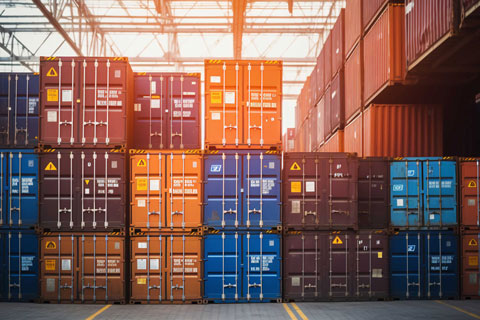
Ocean freight door-to-port
We ship the goods from the factory in China to the port of destination. Once the goods arrive at the port, the consignee is responsible for dealing with the customs clearance and picking up cargo from the port to the final destination.
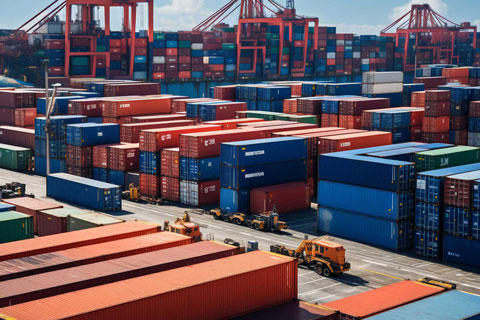
Ocean freight port-to-port
The freight forwarder is responsible for shipping goods from the port of departure in China to the port of arrival at the destination country. Consignees or their representatives deal with customs clearance, and shipping from the arrival port to the final destination.

Ocean freight door-to-door
The method means multimodal shipping. Freight forwarders ship the goods from their or factory's address in China to the final destination in other countries, including customs clearance, tax, and door-to-door delivery in the destination country service.
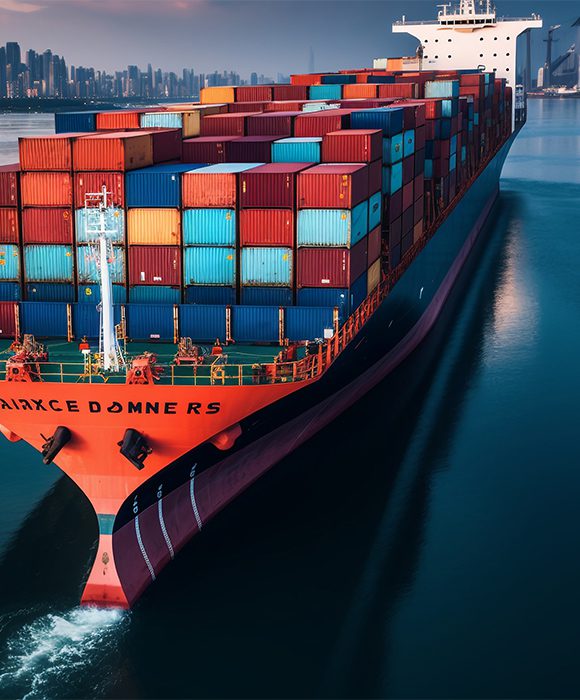
Main Export Seaports in China
Here is a list of 10 major export ports in China:
2.Shenzhen
3.Guangzhou
4.Ningbo
5.Qingdao
7.HongKong
8.Tianjin
9.Xiamen
10.Fuzhou
Partnering with us, you will benefit from our competitive rates and service in handling FCL & LCL shipments from the above port in China.
We will assist you in optimizing your shipping by providing cost-effective solutions.
Ocean Freight Charge Weight Calculation Methods
The FCL shipping rates are usually based on the full container. Your China freight forwarder will quote the whole container, which is a fixed price, you can fill the container up.
The LCL shipping rates are determined by comparing the total cubic meter (CBM) or gross weight in tons. The higher the value between the two is the final billing weight.
In ocean freight, 1 CBM is equivalent to 1000 kg.
Estimating Ocean Freight Costs
The cost of shipping sea freight from China is determined by various factors, including:
- Nature of Goods: The specific characteristics of the goods, such as fragility or hazardous nature, may necessitate special handling or packaging, affecting the overall shipping cost.
- Weight and Volume: Heavier and bulkier shipments generally incur higher shipping expenses.
- Destination: The cost of shipping is influenced by the distance and location of the destination.
- Incoterms: The chosen incoterms will impact the overall shipping expenses.
Feel free to provide us with the details of your shipments
I will be glad to assist you in checking the chargeable weight and shipping rates promptly.
Key steps for sea shipping
Sea shipping cargo from China involves a series of steps. Here is a concise overview of the process:
Step 1: Collecting Goods
The first step entails collecting the goods from your supplier and ensuring proper and secure packaging of the goods.
Step 2: Delivery to port of departure
Once your goods are ready, you can transport them to the designated port of departure and actively prepare all the required documents for export customs.
Step 3: Loading and Shipping
Next, the port staff loads the goods onto the ship and transports them to the designated destination port. Depending on the distance and specific shipping routes, sea freight usually takes several weeks to reach the destination port.
Step 4: Customs Clearance
The goods undergo customs clearance after the ship arrives at the destination port, including paying duties and taxes and submitting required documentation.
Step5: Delivery to the final destination
Following customs clearance, the goods are delivered to their final destination, either a warehouse or directly to the customer’s doorstep.
Considering the Proper Incoterms
Incoterms, which stands for International Commercial Terms, establish the obligations of the buyer and seller in a transaction. Some common Incoterms used in sea freight include:
EXW (Ex Works): The seller’s responsibility is to make the goods available at their premises. The buyer assumes all other responsibilities, such as transportation and customs duties.
FOB (Free on Board): The seller delivers the goods to the port of shipment and handles export customs. The buyer is responsible for the sea freight and import customs.
CIF (Cost, Insurance, and Freight): The seller arranges and pays for shipping, insurance, and delivery to the destination port. The buyer takes care of import customs.
DDP (Delivered Duty Paid): The seller bears all costs and risks associated with delivering the goods to the buyer’s location, including customs duties and taxes.
FAQ
Ocean freight (port-to-port) charges from China to other ports are usually based on the volume of the cargo CBM. However, if the gross weight of the goods exceeds one cubic meter and is over 1000kg, the shipping weight will be according to 1 CBM = 1000kg. In these cases, the weight of the shipment takes precedence over the volume when determining the shipping costs.
Don't hesitate to contact your freight forwarder for more accurate and specific pricing information for your shipment.
Select a port that is near your China suppliers' factory or warehouse. This proximity helps streamline logistics and reduces transportation costs and time.
It depends on the volume of your cargo volume.
We suggest choosing LCL shipping if your cargo volume is below 15 (CBM). This is beneficial when you don't have enough cargo to fill an entire container.
If your cargo volume exceeds 15 CBM or you have enough cargo to fill an entire container, FCL shipping is typically the preferred option, which is suitable for larger shipments.
If importers fail to complete the customs clearance process within the designated timeframe, several consequences may happen.
1. Storage Charges: The customs authorities or the warehouse where the goods are held may impose storage charges for each day or week that the cargo remains uncleared.
2. Customs Penalties: Importers may face penalties or fines imposed by the customs authorities for non-compliance with customs regulations.
3. Customs destroys goods
Importers can consult with customs authorities or customs clearance agents to finish the customs clearance.

